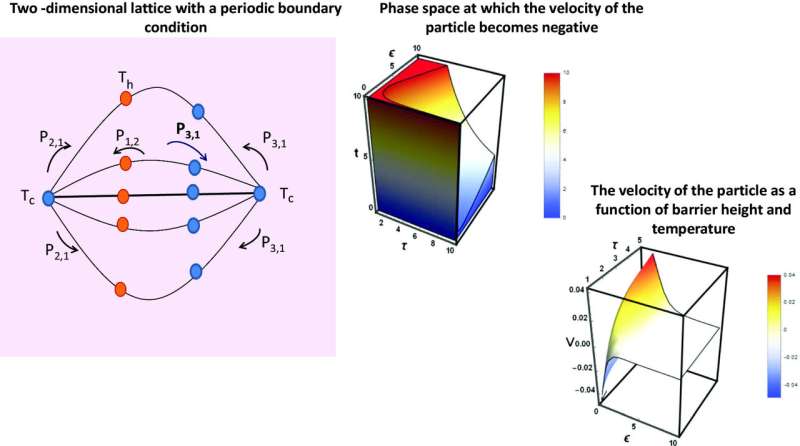Credit: The European Physical Journal B (2023). DOI: 10.1140/epjb/s10051-023-00533-y
A new study determines the efficiency of a single-molecule heat engine by considering a series of ratchets that transfer energy along a network.
From internal combustion engines to household refrigerators, heat engines are a ubiquitous component of daily life. These machines convert heat into usable energy which can then be used to do work. Heat engines can be as small as a single molecule whose random movements exchange energy with the environment. But determining the efficiency of a molecular heat engine is no simple task.
In a study published in The European Physical Journal B, Mesfin Asfaw Taye, of West Los Angeles College, California, U.S. now calculates the performance of a molecular heat engine in terms of a series of molecular ratchets that transfer energy, step-wise, in one direction. He shows and discusses how to manipulate such a system for transporting a particle along a complex path.
Taye and his colleagues have previously invoked the concept of a "Brownian ratchet" to calculate the velocity, efficiency, and overall performance of a molecular heat engine. Here, a particle (the motor) changes position through thermal motion according to a mechanism that forces an otherwise randomly moving object to travel in one direction only.
Now Taye and his group provide a complete analytical solution to their model equations that allows them to calculate the system's performance at every time along the way. Doing so provides a way to examine how the ratchet arrangement impacts the motor's efficiency and velocity. They also show that a motor operating in a heat bath with gradually decreasing temperature can lead to higher velocity but lower efficiency compared to a system with fixed hot and cold baths—another tool for manipulating the motor's movement.
This finding provides a framework for studying the thermodynamic features of protein-based molecular motors and other micro- and nano-scale systems known to convert chemical energy into mechanical motion. It offers a way of transporting a particle to a desired location in a network at a speed that depends on the arrangement of the ratchets.
More information: Mesfin Asfaw Taye, Time-dependent solutions for efficiency and velocity of a Brownian heat engine that operates in a two-dimensional lattice coupled with a nonuniform thermal background, The European Physical Journal B (2023). DOI: 10.1140/epjb/s10051-023-00533-y
Journal information: European Physical Journal B
Provided by Springer























